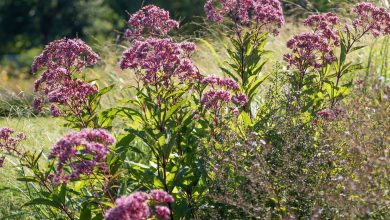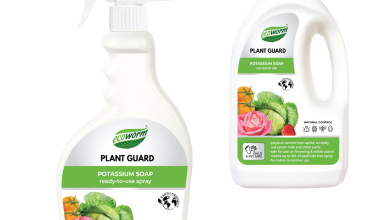[12 Steps] to Grow Peas in Your Garden Without Problems
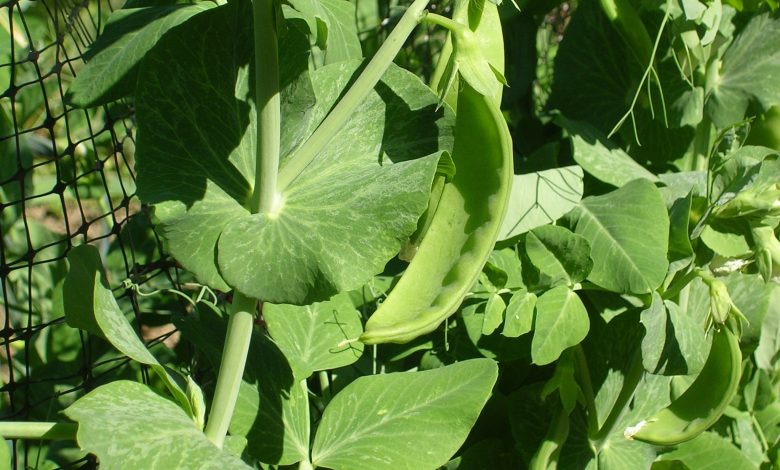
Did you know one thing? Peas can be grown almost all year round., except July and August (the hottest months).
Great, isn’t it?
Do you know something else? They have a HUGE amount ofhealth benefits.
And… the last one: during their cultivation they give off nitrogen in the soil, soThey greatly enhance the planting that is done afterof other vegetables and greens.
I don’t know if you’re convinced, but I am. I want to grow my own peas and I want to learn how to do it.
Let’s get to it
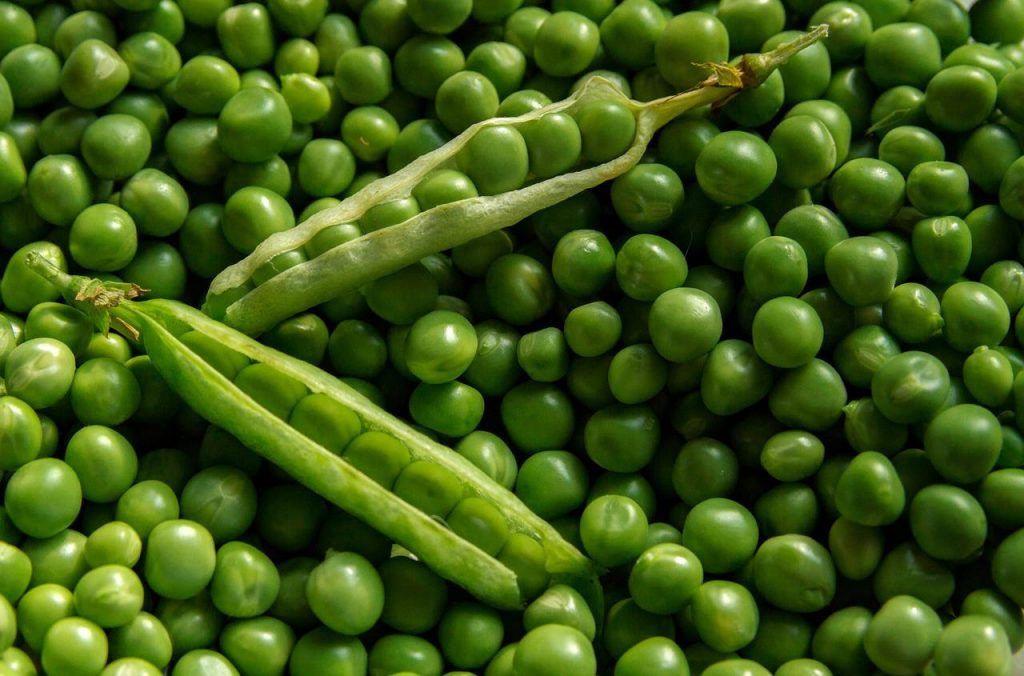
The keys to success:
- When? Preferably in the fall. In cold climates, from February.
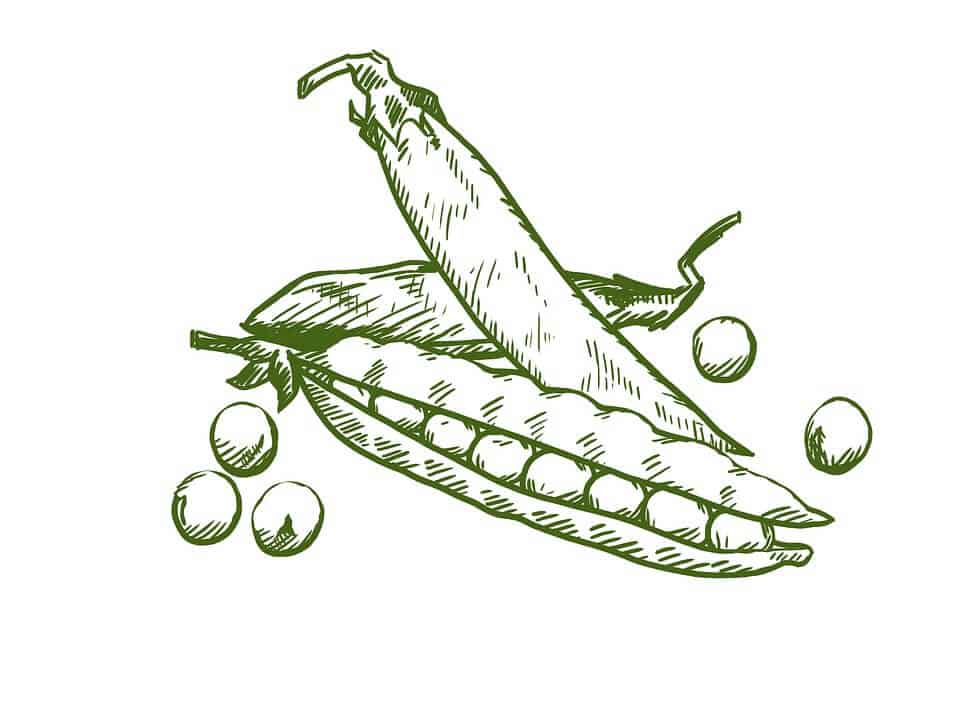
- Where? Place that receives sunlight. At least 6 hours of light a day.
- Harvest time? Between 58 and 72 days.
- How do we prepare the land? The pH of 6.5. Moist, well-draining soil. Removed with a power tiller (preferably).
- How do we pay? With compost, slightly. Also earthworm humus. Adding more nitrogen is not recommended.
- How do we water? Ideal, with drip.
- How often do we water? Avoid waterlogging. It prefers copious and spaced watering. So wait several days but more watering time. Do not water the plants to avoid diseases.
- How do we plant peas? Make grooves. Bury the seeds about 3 cm. Then every 20 cm bury a seed again. They are plants that require a lot of space.
- How do we harvest? Periodically pay attention to the lumps of peas growing inside the pods. Monitor the appearance of flowers, generally a week later we can collect.
- What do we associate it with? In general with any other crop.
- What do we NOT associate it with? Neither garlic nor onions.
- What pests and diseases does it have? The pea worm, birds, snails, aphids.
Peas are legumes that grow in cool weather, between fall and spring.
They are characterized by beingclimbing plantsand, in addition to being a good source of protein, minerals and fiber, they are also beneficial for the soil, as they fix nitrogen in the soil.
Peas can be eaten fresh, in salads, on rice, in soups, stir-fried, or stewed.
and how they turn outRelatively easy to growThey are a good option for those who start to make their own garden.
Did you know…It was one of the plants used by Gregor Mendel in his experiments, which laid the foundations of genetics.
Main characteristics of peas
Its scientific name is Pisum sativum and it is native to the Mediterranean basin.
It is one of the oldest edible plants and probably one of the first cultivated by humans.
Fossils almost 10,000 years old have been found at archaeological sites in the Near East. For the 2,000 a. C. its cultivation had already spread throughout Europe.
Did you know…The best way to loosen fresh peas is to use your thumb to scrape the peas off, as they are only attached to one side of the pod.
Peas as we consume them are actually the seed that is enclosed in the pea pod.
Varieties:
- Dwarf varieties, whose stem reaches between 35 and 60 cm. of length.
- Semi- dwarf varieties, with stems 60 to 70 cm.
- Climbing varieties, whose stems measure between 100 and 180 cm.
Peasare harvested during cool seasonsof the northern hemisphere, although they can be enjoyed both in spring and autumn.
 Your plant requires loose and light soil for its cultivation and, although it is not very demanding regarding the nutrients of the substrate where it is planted, it is recommended to provide some fertilizer with lime and dolomite content.
Your plant requires loose and light soil for its cultivation and, although it is not very demanding regarding the nutrients of the substrate where it is planted, it is recommended to provide some fertilizer with lime and dolomite content.
By sowing it, in addition to taking advantage of all the nutrients that freshly grown peas provide, you can enjoy their exquisite flavor when they are still fresh.
And the best thing is that you will greatly increase the structure of the soil in your garden.
Even the plants that remain after the harvest will serve as green manure.
Did you know…You can tell if the peas are young by the firmness of their pods.
Necessary conditions for growing peas
To plant peas we must pay attention to the following requirements:
The weather
They do well in a temperate, moderately cold, humid climate. They do not support excessive heat, nor very dry weather.
Its optimal temperatures are aroundbetween 15 to 22 ºC.
With temperatures below 8 ºC the plant stops growing and its development stops.
weather tips
 To ensure that we have cool weather, we can grow peas in late summer or early fall and thus harvest them during the winter.
To ensure that we have cool weather, we can grow peas in late summer or early fall and thus harvest them during the winter.
If the place where it is located has very low temperatures, it will be better to sow a month before the date of the last frost.
They also do not support high temperatures.Above 30 ºC, it is no longer recommended for the well-being of the plant.
Pea plants prefer to be in full sun. At least 6 hours a day, ensuring that the weather is not too hot.
In semi-shade its performance decreases a bit, but it does not stop.
Some varieties, such as those with wrinkled seeds, can withstand a little more shade.
If you live in a very hot region, plant your peas at a time when the sun is not as intense or in a place where they get sun but can be shaded during the hottest hours.
Determine which places in your garden are the most appropriate for growing peas.
Irrigation
It requires soil with a certain degree of humidity, socopious and spaced irrigations are advisable,more than the continuous risks.
Irrigation Recommendations
The most importantis to avoid waterlogging.Too much water can cause the seeds to rot.
Use drip irrigation to add water little by little throughout the day and night, in moderate amounts.
To prevent fungus from forming, it is best to aim the water at the soil and not at the leaves. When the seeds have not yet germinated, try to do drip irrigation so that the pressure of the water does not drown them or bury them further.
During the flowering period, the plants will need more water.
Trick:To find out when it is convenient to water, bury a pencil in the soil. If it comes out dry it means the soil needs to be watered. On the other hand, if it comes out with traces of soil adhering to it, it means that the soil still contains enough moisture in the lower layers.
Wait until the top 3 inches of soil has dried out before watering it again.
It is recommended to establish a good watering regimen and to be constant.
You can use a gentle sprinkler, such as a hose type rain sprinkler head.
As information, for industrial planting it is recommended to water pea plants 70 ml per plant, every two days.
The Nutrients
Although peas are not a particularly nutrient- demanding crop, they do requiresignificant inputs of fertilizers.This will ensure a good harvest.
Depending on the conditions of the soil, it may be convenient to add some complex fertilizer that contains some lime and dolomite.
Nutrient Tips
 In the event that they are poor soils, we can add a little well-fermented compost. Likewise, you can add earthworm humus.
In the event that they are poor soils, we can add a little well-fermented compost. Likewise, you can add earthworm humus.
Remember that peas can get their own nitrogen. If you give them too much of it in the form of fertilizer you will make the vines grow big, but they will give few peas.
If the plant grows yellow, or doesn’t produce flowers at a regular rate, you can add a handful of compost to the top layer of soil.
When they have flowered, you can also apply a banana infusion or potato infusion to provide them with potassium.
Did you know…India is the world’s largest producer of peas.
the substrate
Peas do well in all types of soil, as long as it is loose and has a reasonable amount of compost. However, they prefer cool, loose, well-drained soils.
Very calcareous and dry soils, or excessively acidic and humid ones, do not suit it.
Substrate Recommendations
Keep the soil free of weeds to avoid pests and diseases.
You must ensure that the pH is not lower than 6.5.
The soil does not need to be excessively deep, but it does need to be well drained. To achieve this, sawdust or small stones can be added to the substrate to facilitate drainage.
Another good idea to make it easier for water to drain properly is to mulch with mulch or comfrey leaves.
They need a sunny exposure and frequent watering.
Before sowing
The seeds
 The pea seed is round, 0.5 cm. about. Its color is greenish brown or white, depending on the variety.
The pea seed is round, 0.5 cm. about. Its color is greenish brown or white, depending on the variety.
It can also be smooth or wrinkled.
Choose a variety that is to your liking and that fits well to the place where you are going to plant it.
Climbing varieties need a frame to channel their growth. They are more colorful and require more vertical space.
Dwarf and semi-dwarf varieties grow bushy and are more compact, so they do not require support. Since they don’t create much shade, you can even plant them around other plants.
Temperature
The ideal temperature should be 20 ºC.
pH
Check the pH of the soil. Rank should not be less than 6.5
the fertilizer
Add a homemade organic matter such as well-fermented compost to the soil. You can also add worm castings.
Add 3 inches of compost for every 100 square feet of soil.
It may be convenient to provide some complex fertilizer that contains some lime and dolomite.
Potting soil has fertilizer built in, so you may not need to add compost to it.
To have a good harvest, do not overdo it with the fertilizer. Remember that peas can get their own nitrogen.
Where to plant peas?
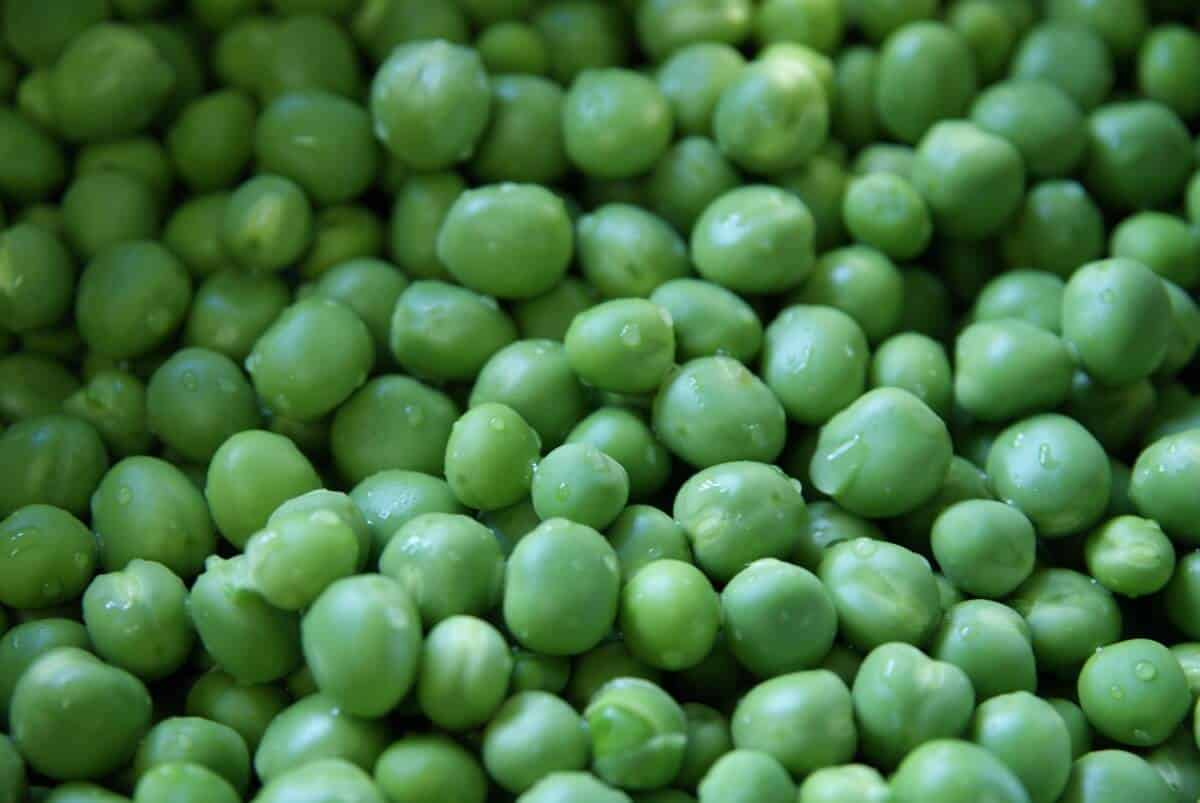 The land must be moist and have good drainage to avoid waterlogging.
The land must be moist and have good drainage to avoid waterlogging.
Find a place where the plants receive at least 6 hours of sun a day, making sure that the weather is not too hot.
If you live in a very hot region, plant your peas at a time when the sun is not as intense, or in a place where they receive sun, but can be in the shade during the hottest hours.
You will need a good extension of land, since the cultivation of peas is usually carried out in rows.
Dig the furrows to a depth of approximately 5 cm, leaving a considerable distance between each one. Approximately 50 cm between each groove.
We recommend you water the land before sowing.
How to Plant Peas
When do we plant them?
The sowing time varies a little depending on the variety and the climate where you live, although in general, it is sown in autumn, between October and December, so that the first pods can be harvested approximately 10 weeks later.
If your region has very cold winters, you can plant them in late winter.
Alternatively, to find the last date you can plant your fall snap peas, locate the date of the last frost in your region and count 70 days from that date.
Did you know…They can retain their nutrients if you run them through water. Young peas can be eaten raw.
The planting process
 Let the seeds soak overnight before sowing to ensure good germination.
Let the seeds soak overnight before sowing to ensure good germination.
Once the grooves have been made in the ground, make holes in each one, to a depth of no more than 3 cm.
Dig holes every 20 cm.
Place three or four seeds in each. When the seeds have set, cover the furrow with some mulch and press down lightly. Then, water very gently to prevent the seed from being exposed.
Here you can take water with your hand and spray it where you planted the seed.
If you prefer to sow in a seedbed, place the seed at a depth of 2cm. and keep moisture in the soil.
You should transplant when the seedlings are 8 cm tall.
When doing so, try not to mistreat the roots and, if they are very curled, you can cut them a little. Place the seedlings 15 cm apart from each other.
As a recommendation,Consider spacing your planting.Two plants are enough for one person, every two days.
Calculate the number of people and how often you will harvest your peas to decide how many plants you should plant.
Depending on the variety and the freshness of the seed, the first shoots on the surface can be seen between 2 and 10 days.
If the soil is rich in nutrients, you may no longer need to add fertilizer once the peas are planted.
Did you know…Peas are green because they are harvested when they are immature. As they mature they begin to turn yellow and turn into starch.
tutoring
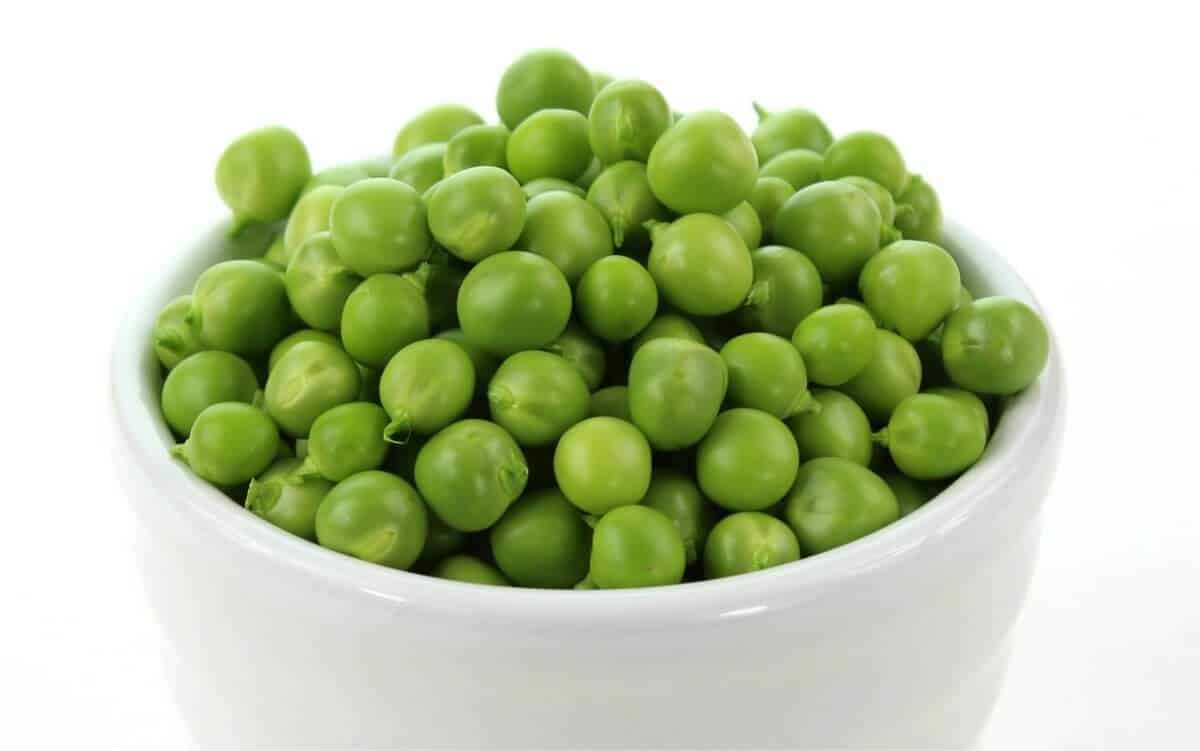 During the growth of the pea we will need to tutor the plants. This is done to favor the exposure of the plant to sunlight and so that it has adequate ventilation.
During the growth of the pea we will need to tutor the plants. This is done to favor the exposure of the plant to sunlight and so that it has adequate ventilation.
Likewise, a good tutoring allows the pods to develop properly.
El tutorado es particular para aquellas variedades de enrame.
Al principio, se recomienda clavar una estaca cuando se muestran los primeros brotes para que puedan ir creciendo.
Conforme la planta se vaya elevando, la estructura deberá ir haciéndose más y más grande. Para lograrlo puedes construir trípodes con ramas secas, cañas o alambres, de modo que las plantas puedan ir enramándose y creciendo de forma vertical.
En caso de no disponer de cañas, también puede construirse alguna especie de muro con malla o tela metálica por la que puedan irse enredando.
Ten en cuenta que algunas variedades solo alcanzarán 60 cms. de altura. Estas no requieren estructuras para apoyarse.
La cosecha y recolección
Most varieties of baby peas takebetween 58 and 72 days to arriveat harvest time, although there are varieties that can take another 40 or 50 days.
To know if your peas are ready to be harvested, all you have to do is inspect the plants regularly, gently feeling the pods and paying special attention to the pea bumps that have formed.
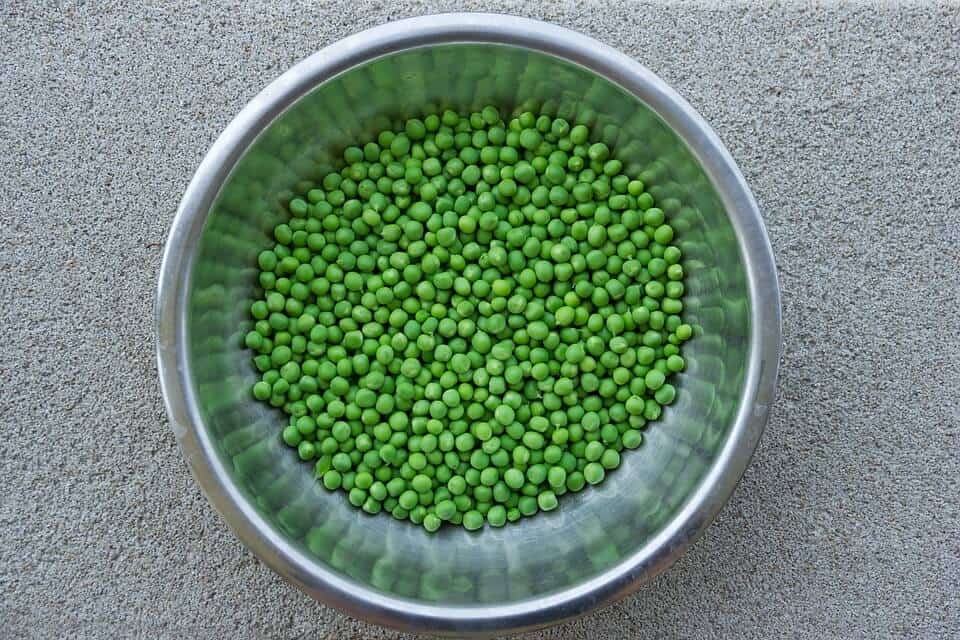 Another way to tell when it is the right time to harvest is by watching for the appearance of flowers. Normally the harvest can be given a week after the plant has produced flowers.
Another way to tell when it is the right time to harvest is by watching for the appearance of flowers. Normally the harvest can be given a week after the plant has produced flowers.
We will collect the pods when they are full, but they are not too big. Usually, they should have reached a length of 5 to 7.5 cm.
You can pick the pods every other day for the best flavor and texture.
It is necessary to remove the pods regularly to encourage the plants to produce more.
You can also harvest young shoots, if you wish. Young pea shoots can be eaten raw or cooked. To do this, you need to cut off the top two levels of leaves on the plant.
Do not cut more than that, as the stem becomes stringy as it grows. This way, the pea plants will grow back and you can harvest them multiple times.
Some peas, like snow peas, taste better when harvested young.
Preferably, harvest them the same day you plan to consume them. The flavor begins to diminish as soon as you remove them from the plant.
What associations are good?
Peas get along well with most plants, except garlic and onions.
If you are careful to leave space between each pea plant, you can plant radishes or lettuce between them.
 The rotations will be spaced in the same plot every two or three years.
The rotations will be spaced in the same plot every two or three years.
What does he not get along with?
With garlic and onions.
Pea pests and diseases
Peas can face different pests and diseases during their cultivation. The most commons are:
predators
Birds, snails and rodents. To prevent pea crops from being eaten, it is best to protect the plant with protective netting.
pea worm
To prevent its proliferation, Bacillus thuringiensis can be used.
aphids
This plague can be counteracted with potassium soap if it is mild.
In addition, mildew and powdery mildew are common problems in growing peas in hot and humid seasons. To combat them, it is recommended to apply horsetail extract or sprinkled sulfur.
This remedy can be alternated with a light solution of cider vinegar, apple cider vinegar, or baking soda and water. This way you may be able to stop the infection before it gets worse.
If you’ve had a serious infection, don’t plant peas or tomatoes in that spot next year, as they’re likely to get infected right away.
More varieties of peas
To learn more about the different varieties of peas there are, take a look at this article.
Similarly, they can also be classified by their seed, whether smooth, wrinkled, white or green.
- Dwarf varieties with round and smooth seeds: Pea Petit Provenzal or Negret, Voluntary Pea.
- Climbing varieties with round and smooth seeds: Prince Albert Pea, Express Pea, Michaux Pea from Holland, King Pea of preserves.
- Dwarf wrinkled seed varieties: Orpheus Pea, Arkel Pea, Oberon Pea, Myzam Pea, Kalife Pea.
- Semi-dwarf wrinkled seed varieties: Semi-dwarf Telephone Pea, Lincoln Pea.
- Climbing varieties of wrinkled seed: Senator Pea, Climbing Telephone Pea, Alderman Pea.
- Industrial varieties: They are very productive. Zenit Pea, Juwel Pea, Monopol Pea, Corky Pea, Oney Pea, Yukon Pea.
- Industrial varieties to freeze after harvest: Freezer Pea 69, Freezer Pea 626, Sprite Pea, Freezer Pea 640.
- Varieties for export: climbers. Carouby de Maussane pea. Snow peas.
You’ll find that peas are called different names depending on where you live, which can lead to a lot of confusion. They are known as peas, peas, beans, petipuás, etc.
To clear up some of this confusion, here we also mention popular strain names, such as:
- English peas: These are the most common peas. The seed is inside the pod and you have to remove them from it to eat them. The pod is generally very hard and tasteless.
- Snow peas : They are also known as snow peas or snow peas. Its pods are flatter and its flavor is sweeter. It is not necessary to peel the pods, as they are edible.
- Sugar Peas: They are also known as Snap Pea. They are more like string beans. The pod is thicker and crisper. They only come in climbing varieties, but good production is achieved in small spaces.
Main properties of peas
As a good legume, peas are a food with multiple benefits and are very rich in nutrients. Among its properties we can find:
- They are an excellent source of vegetable protein, vitamins and minerals. With only 150 g, two thirds of the daily needs of vitamins C and K are covered, and almost 10% of vitamin A.
- They contain a high concentration of enzymes and antioxidants.
- They are also one of the legumes with the highest contribution of carbohydrates, specifically, of soluble sugars.
- They improve mood.
- They promote cell development and regeneration.

![Photo of Olive Tree Diseases: [Characteristics, Types, Detection and Treatment]](https://www.complete-gardening.com/wp-content/uploads/2022/08/olive-tree-diseases-characteristics-types-detection-and-treatment-390x210.jpg)
![Photo of Boldos: [Cultivation, Irrigation, Care, Pests and Diseases]](https://www.complete-gardening.com/wp-content/uploads/2022/08/boldos-cultivation-irrigation-care-pests-and-diseases-390x220.jpg)
